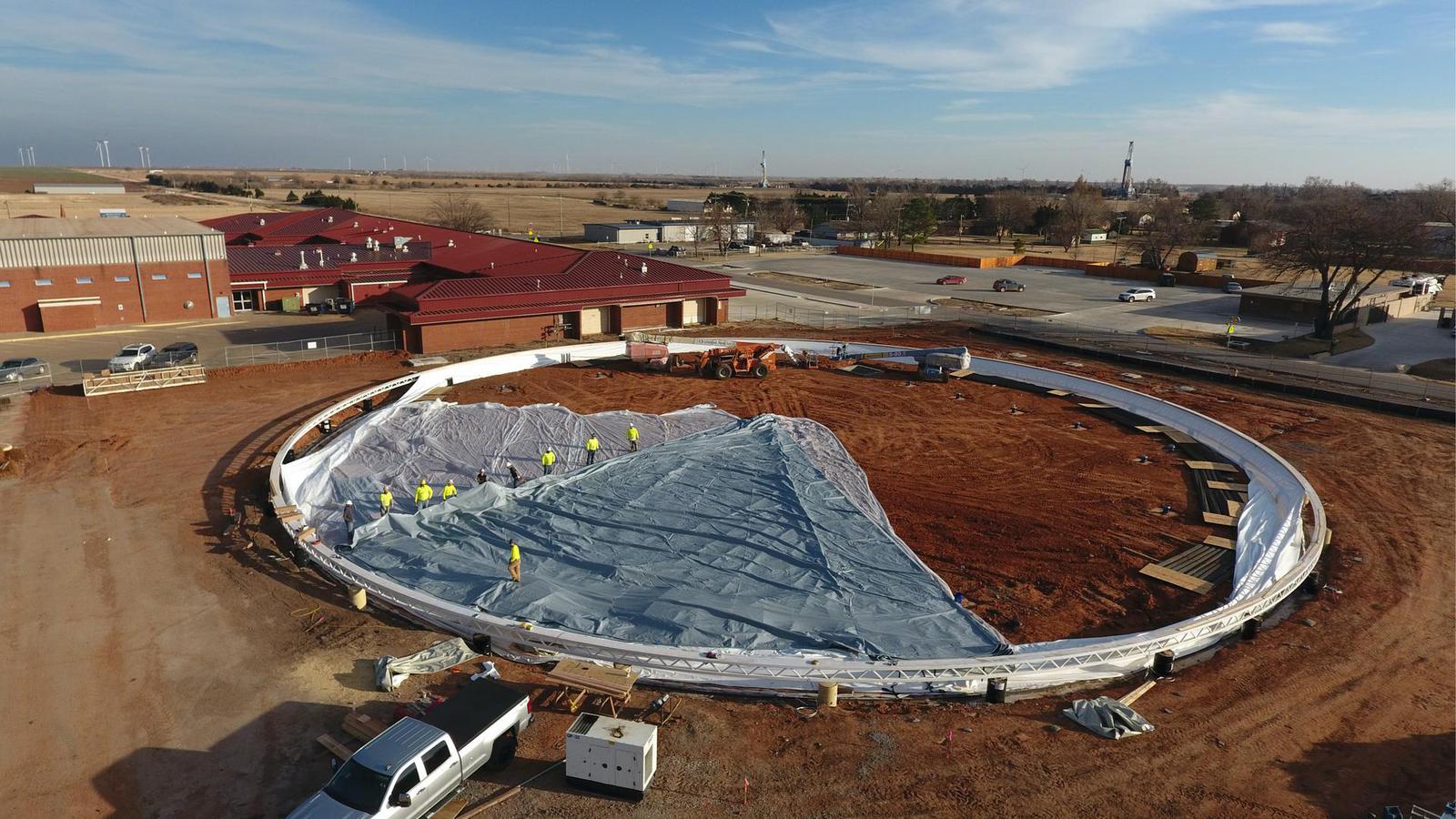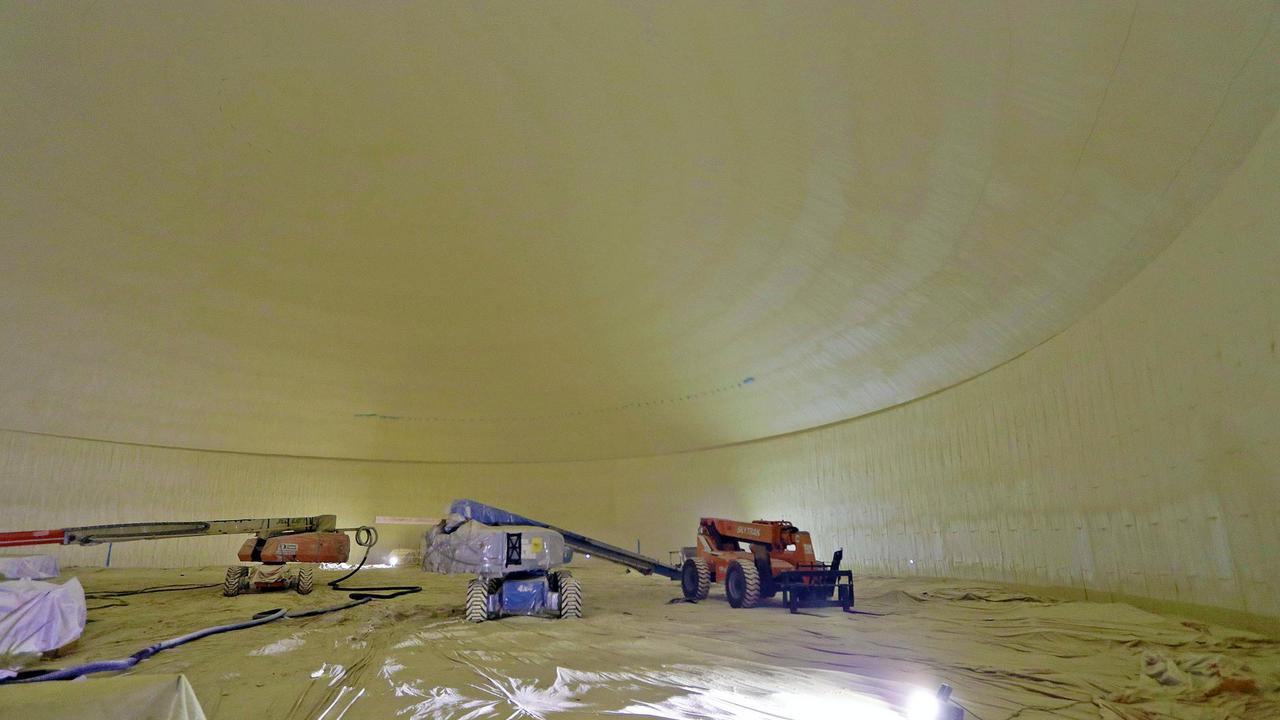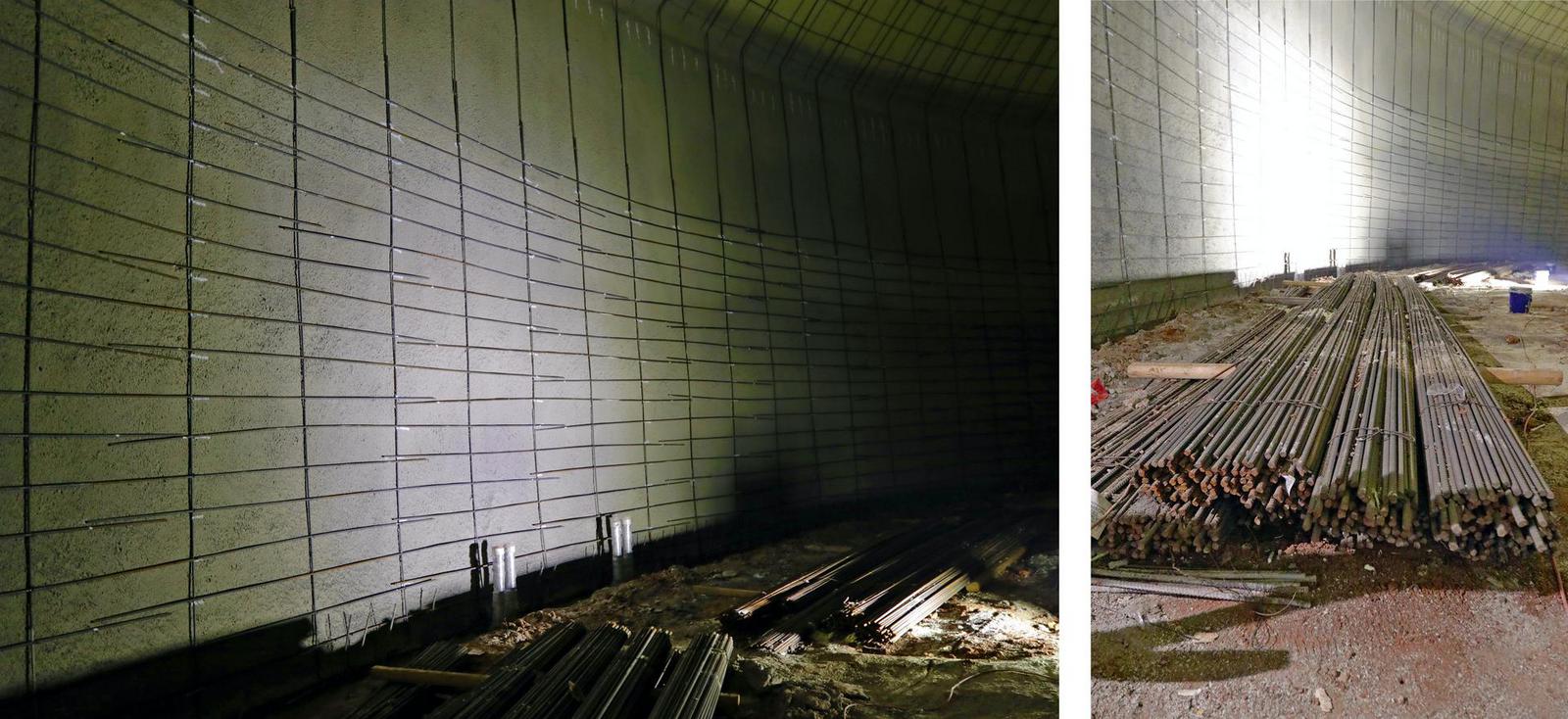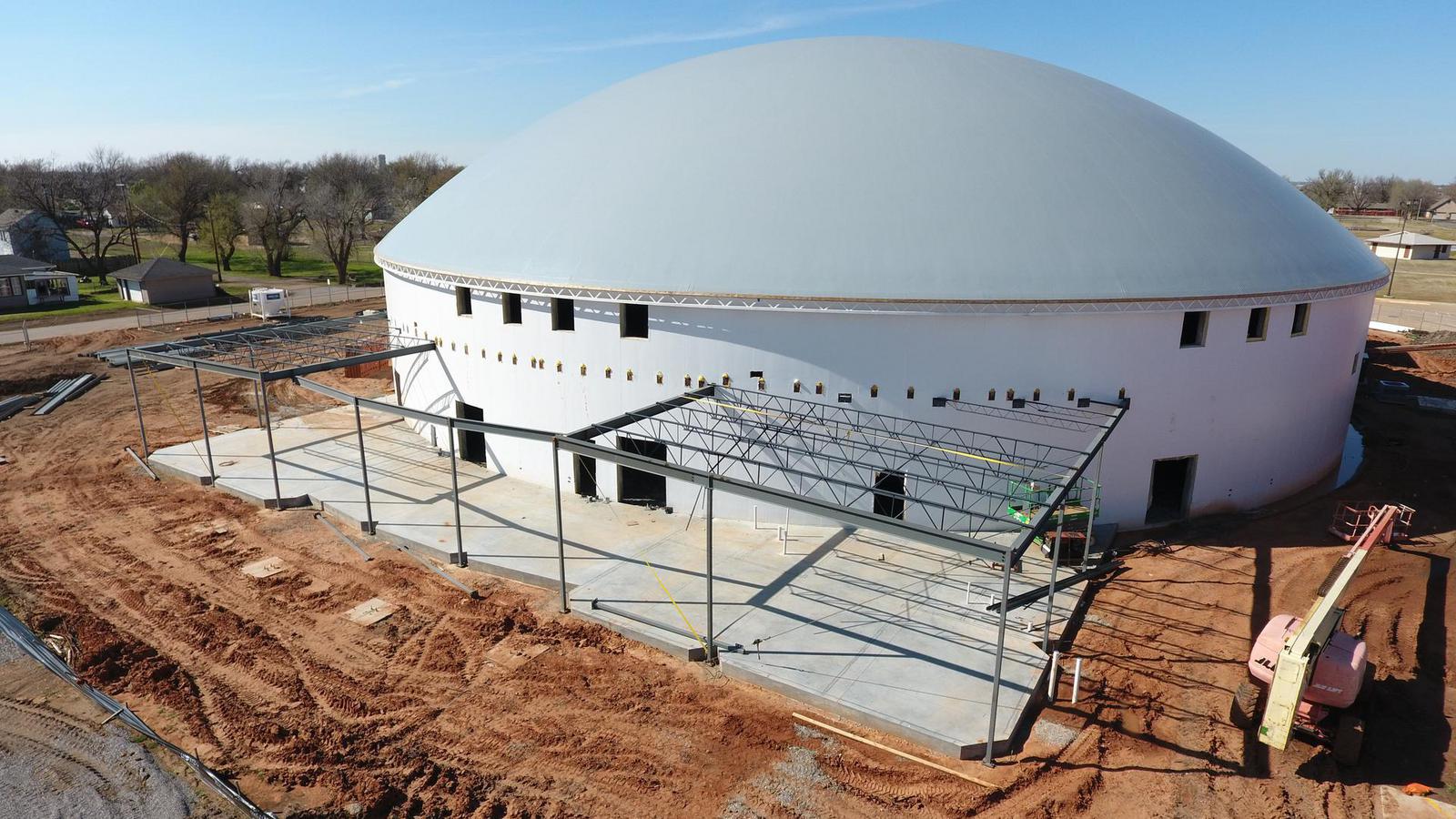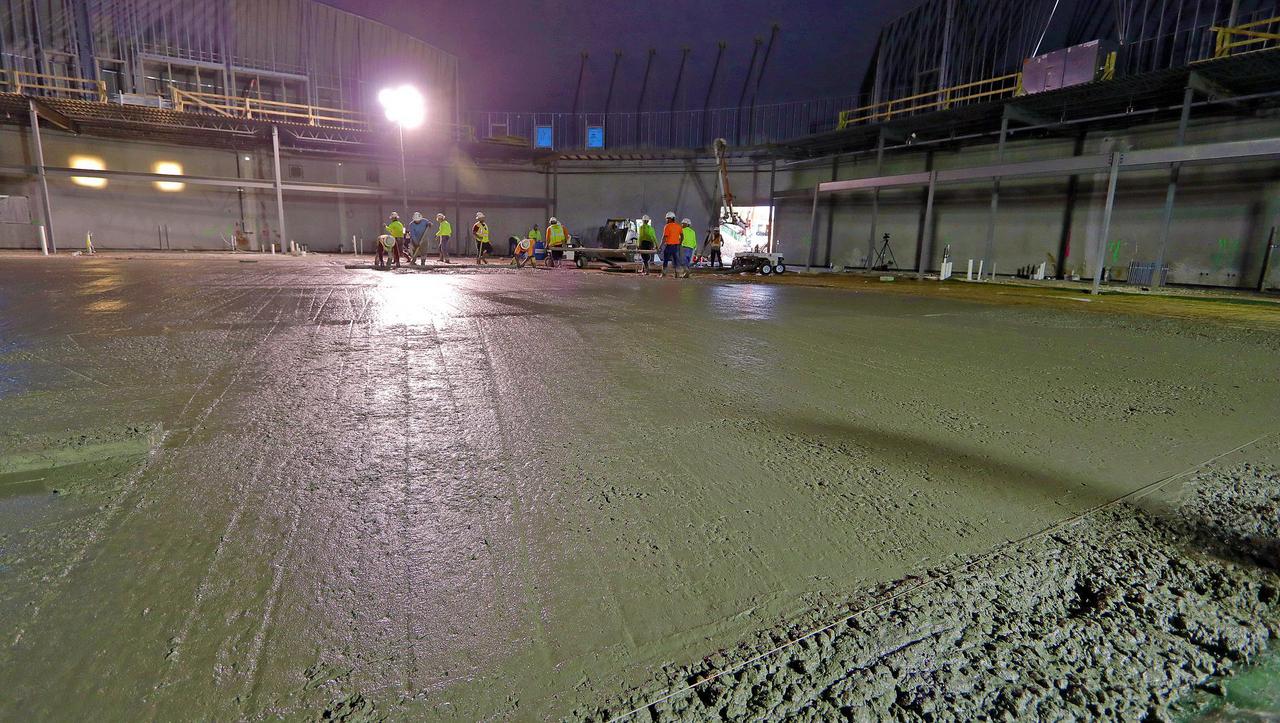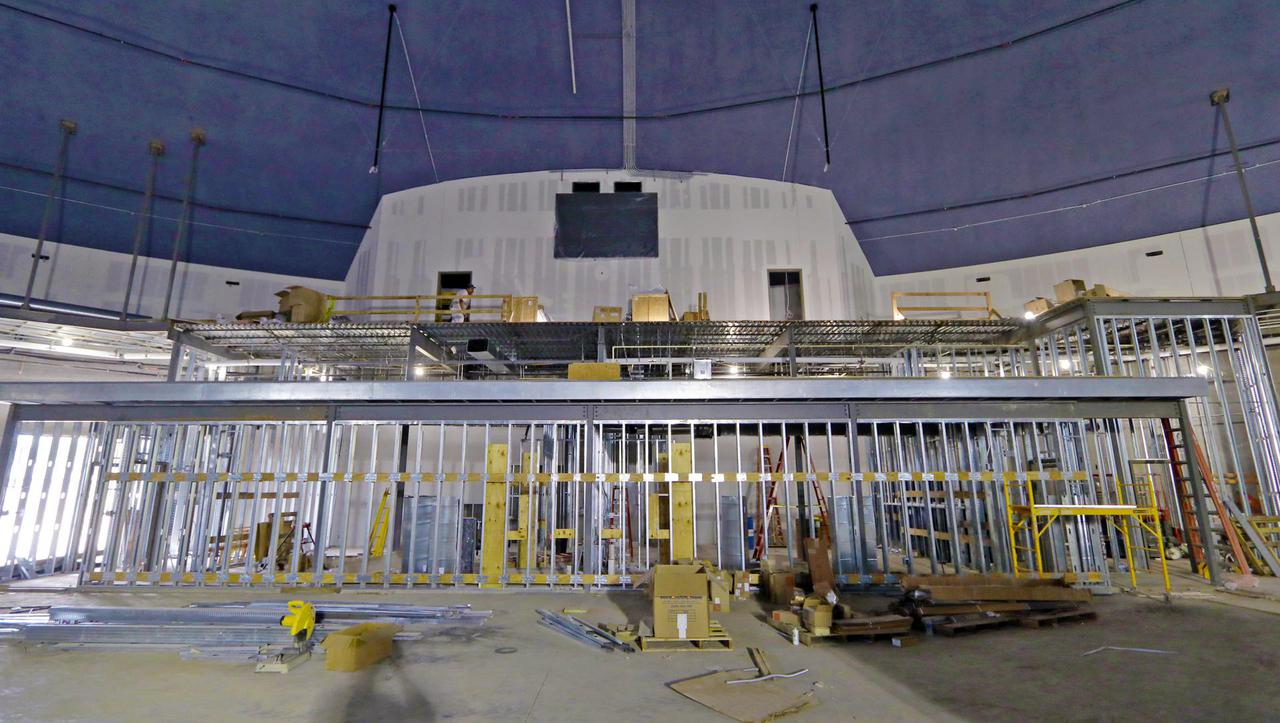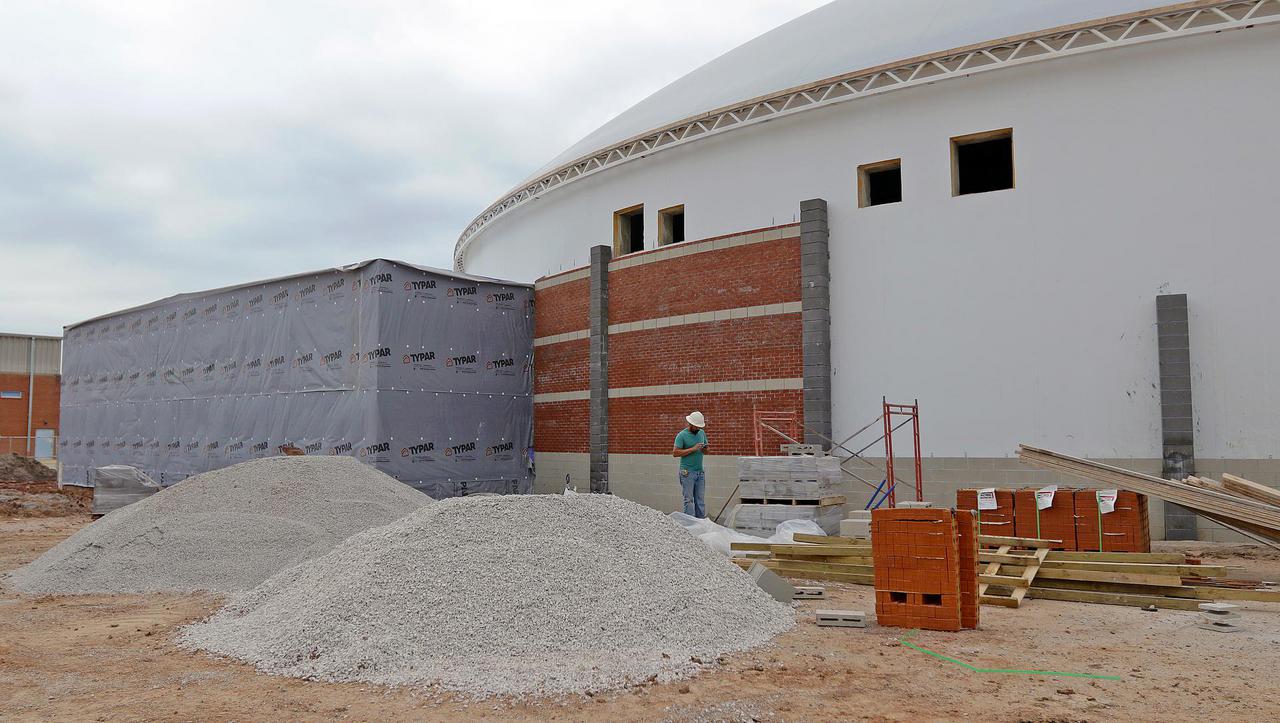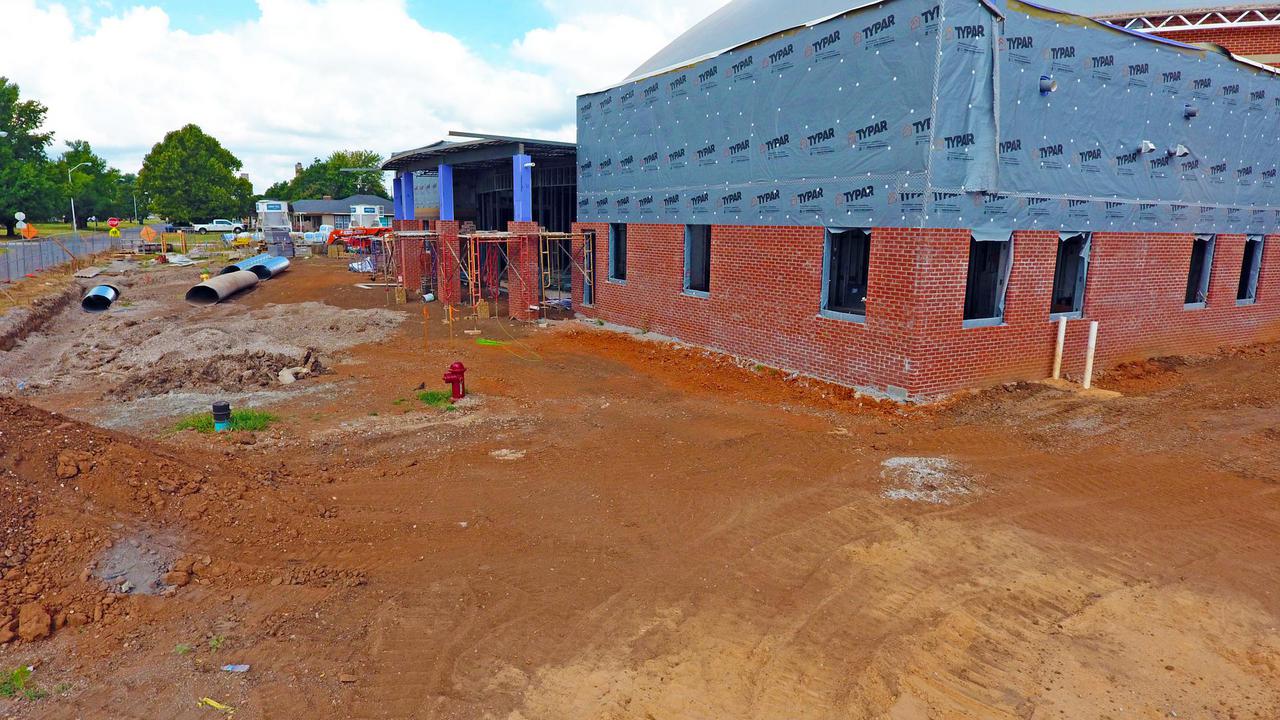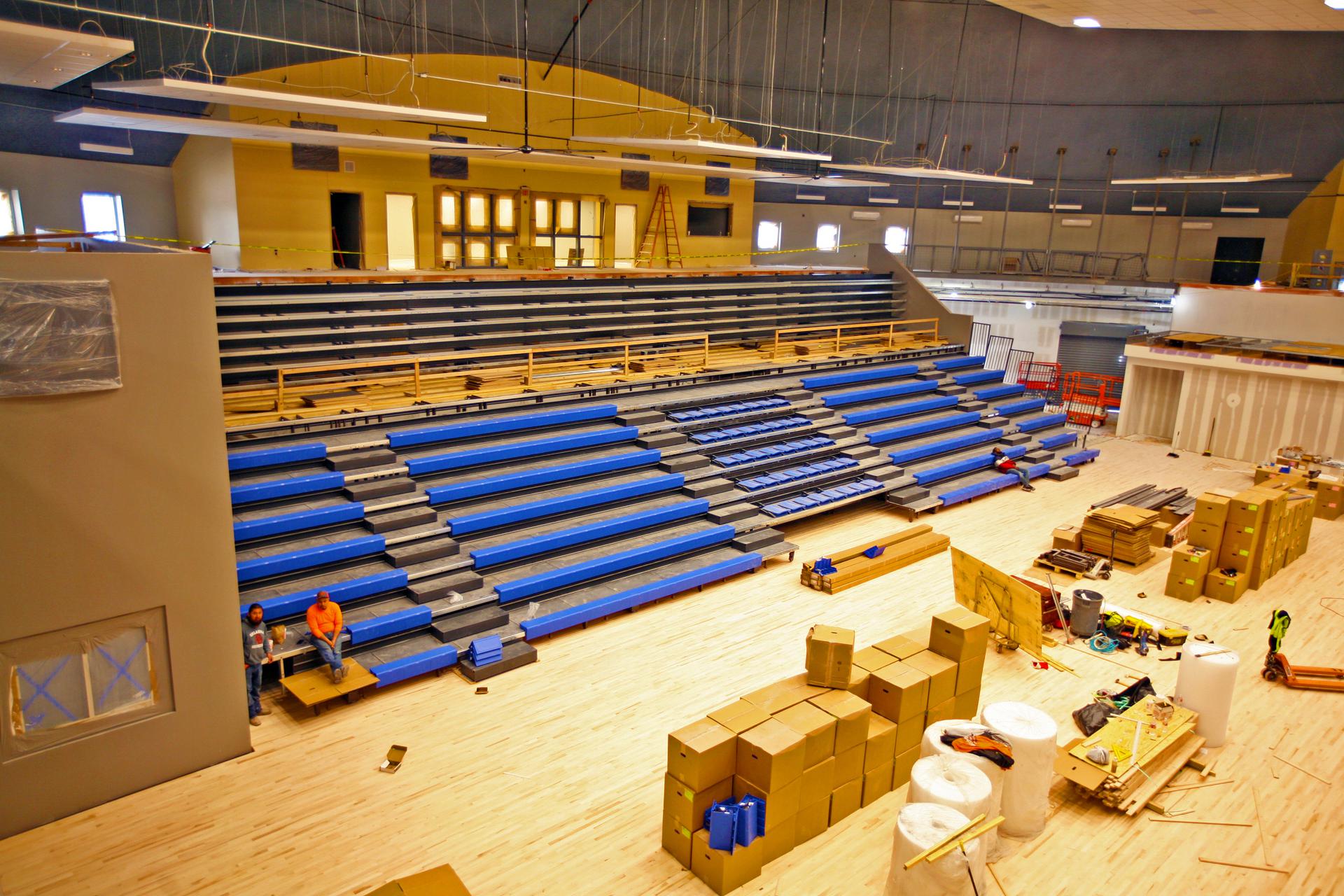The Hennessey Superintendent Said, ‘I Want to Build a Dome.’
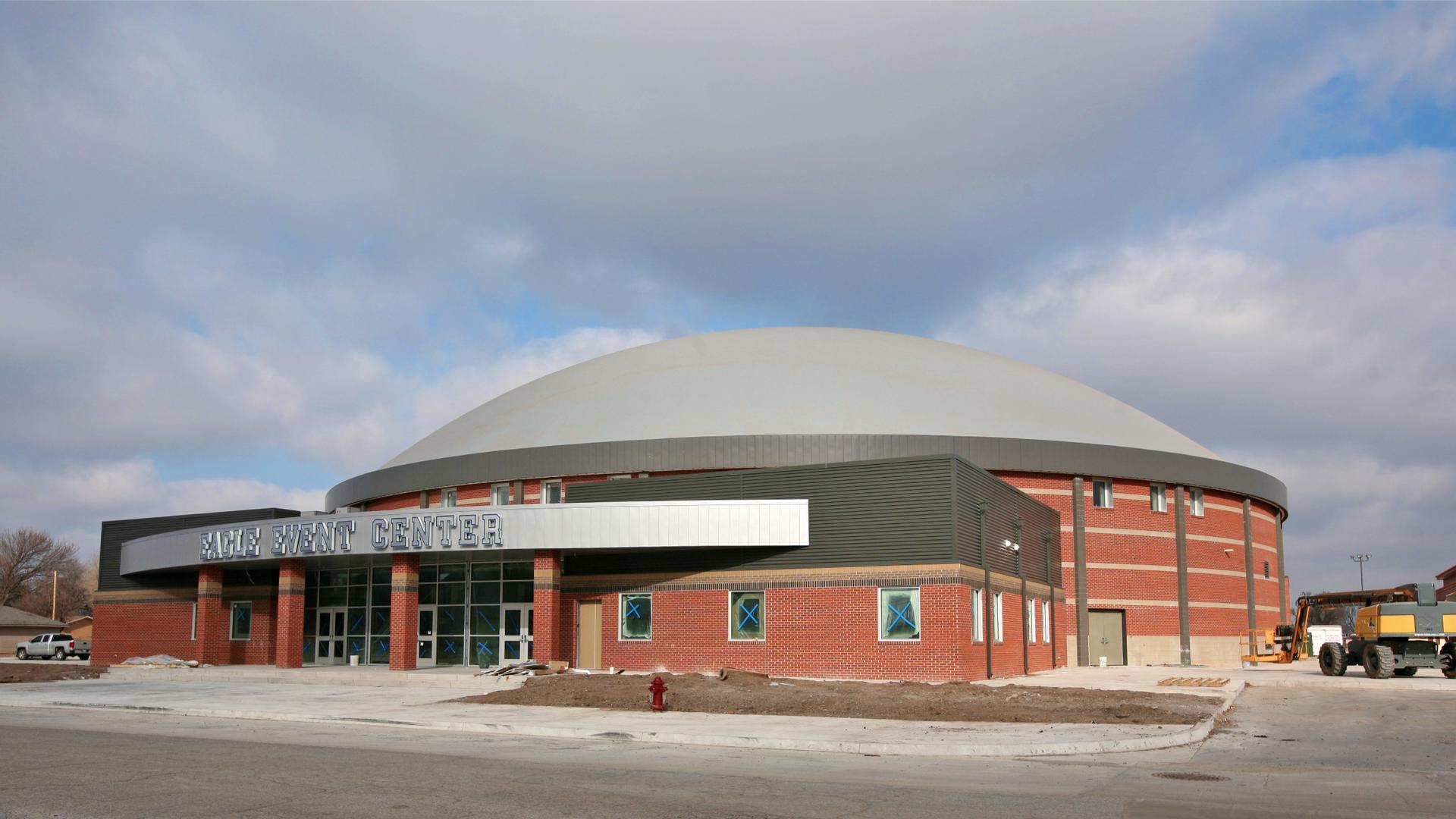
The Eagle Event Center in Hennessey, Oklahoma, is nearly complete. The 1,700 seat facility will serve as the high school gymnasium and a community center.
He said, “I want to build a dome.”
I was sitting in the third meeting of the day when I was introduced to our new school superintendent, Dr. Mike Woods. About a week later, Mike asked me to swing by his office. He said, “I have something I want to run by you.”
At the time, I was teaching an advanced video production class at the school. Mike said, “I want to build a dome. This would be the new gym, as well as a storm shelter. I want to make some videos to educate the public so we can run a bond issue to fund this building.”
I thought, no big deal, I have produced many of these types of videos, but I had no clue what the heck a dome was. At this point, I’m envisioning something like an igloo. After a little Google work, I found that there was a whole movement of these buildings.
The next week, we started producing the videos for the bond issue by interviewing community leaders, the architect, etc. They all talked about how wonderful a building like this would be and that it would not only serve as a new gym and a storm shelter but as an event space for our community. Eventually, the bond issue passed, and we were on our way to our new building—The Dome.
Even at this point, about six months after hearing, “We’re going to build a dome,” the magnitude of the building never sunk in.
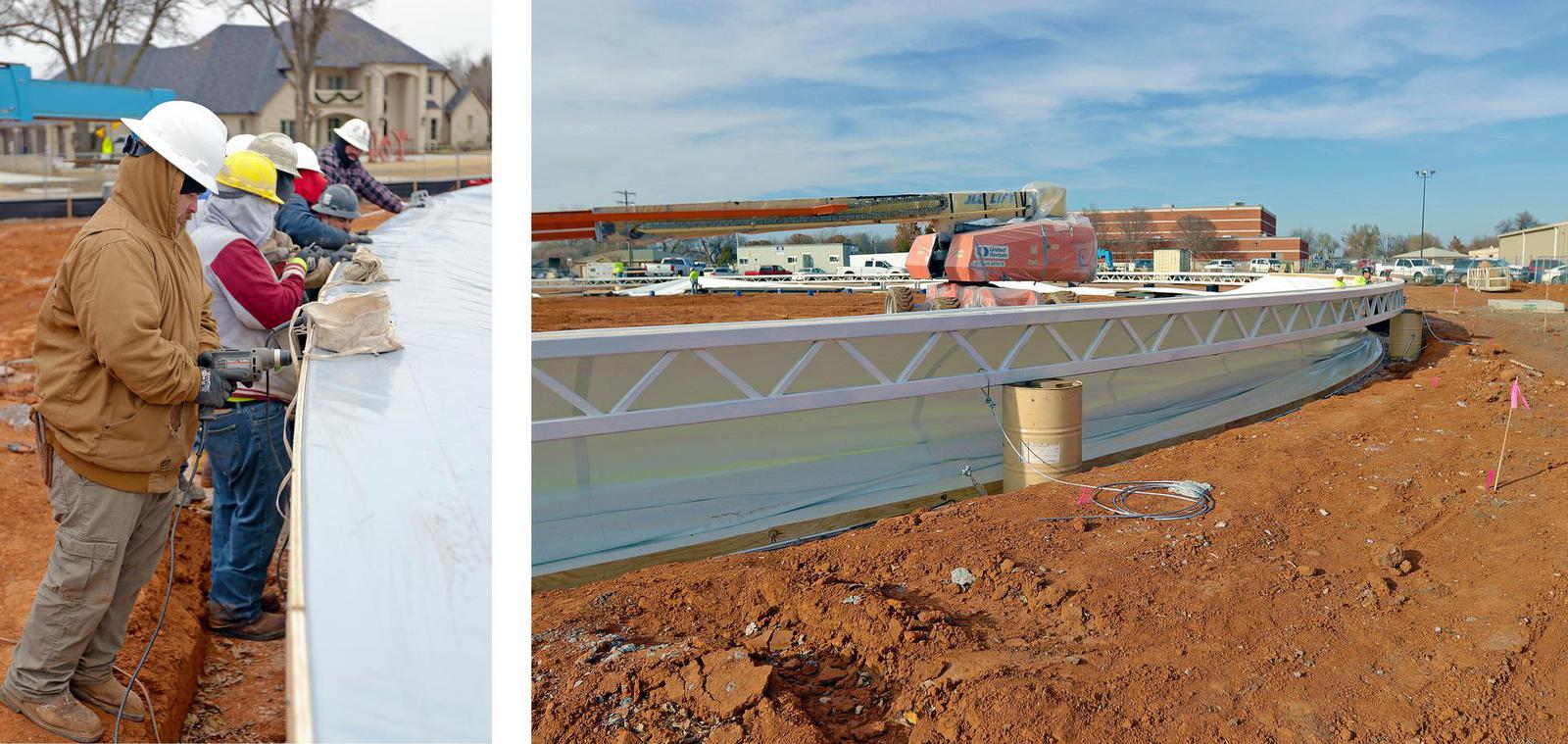
Two membranes — one for the stem-wall and one for the dome — are attached by the construction crew to a 15-ton steel ring.
Construction started in late fall of 2018, and my documentation began. I would capture the entire construction process with videos and photos. When they started pouring the round foundation—180-feet across—it hit me just how big this was going to be.
A few weeks later, they delivered an enormous steel ring. Mark Sorenson with South Industries, the contractor building the dome structure, explained that this was a soft side formed Monolithic Dome structure. They were going to blow air into this vinyl liner that was now attached to the steel ring. The roof and walls would go up all in one piece. I think I just blinked. Not sure if I heard him right. I ask, “Um, so, you going to use some blowers to inflate this thing, and it will lift this 15-ton ring 40 feet in the air?”
His response was, “yup, and this is the biggest one ever built this way.”
My first thought was, did you at least practice this? There was a running commentary around town as to whether this giant 15-ton ring would really go up and stay there.
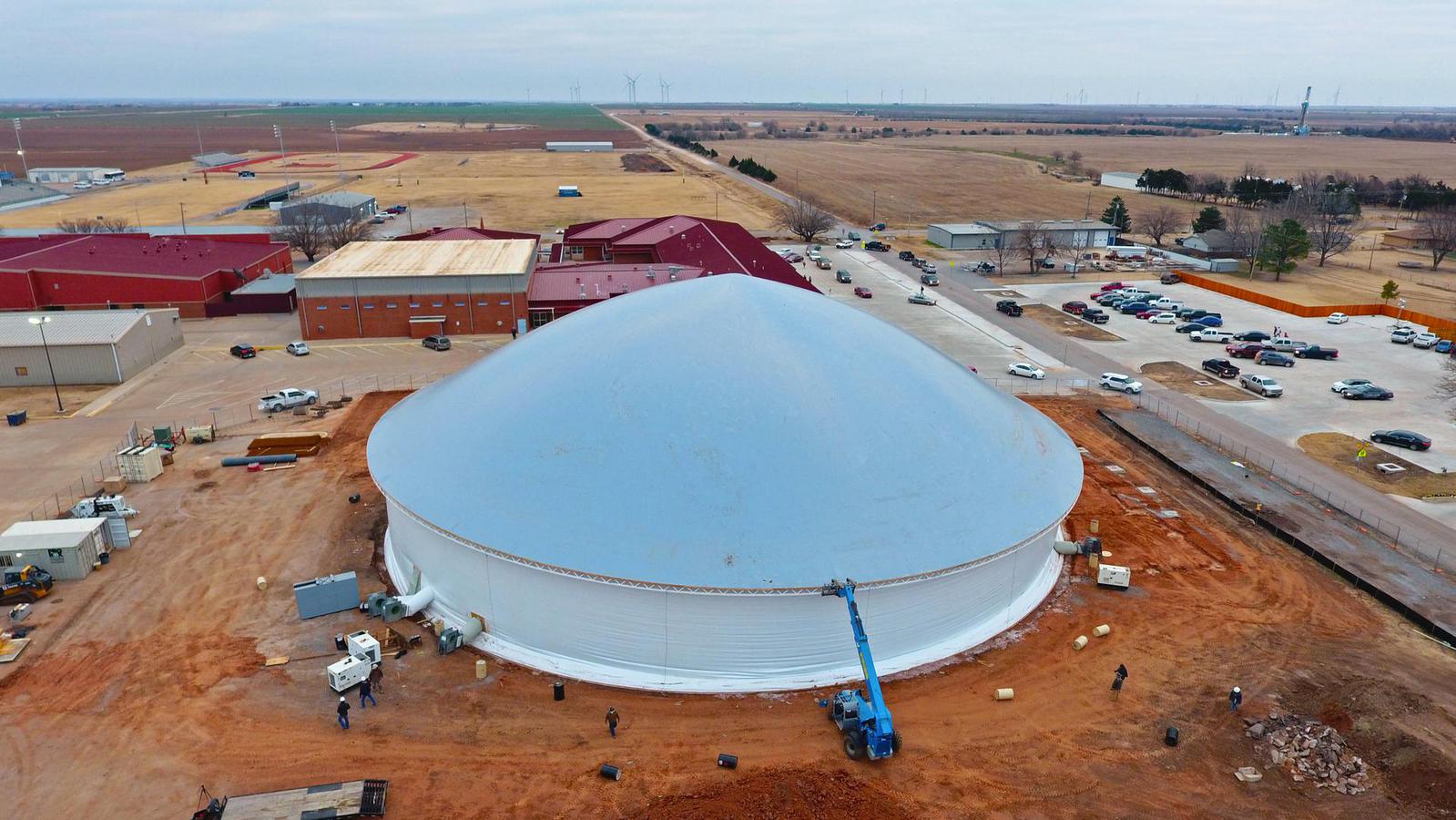
The inflated membrane lifts the 15-ton ring into place, creating a soft-sided form for constructing the stem-wall and dome.
Time to inflate
Before the sun came up on a cold December morning, the South Industry’s crew turned on the four large blowers that were to inflate the structure. They said it should take about three hours to completely inflate, which gave my team plenty of time to set up the four time-lapse cameras, a drone, and several ground video cameras. Next thing we knew, the roof was up within minutes, including that big heavy ring. Oh crap! We were not ready! Think about this, an entire weather-sealed, full-size gymnasium was completely standing in about 45 minutes!
The next day, the crew started applying about 3 inches of spray foam insulation directly to the inside of the vinyl walls and ceiling. During this process, they installed stingers, a 6-inch wire with a foot on it. The foot of the stinger was imbedded in the foam as they sprayed.
I learned this protruding wire is what would hold the rebar in place on the walls and ceiling. The insulation process was done in just a few days. Then, they started installing thousands of pounds of rebar to the walls and ceiling.
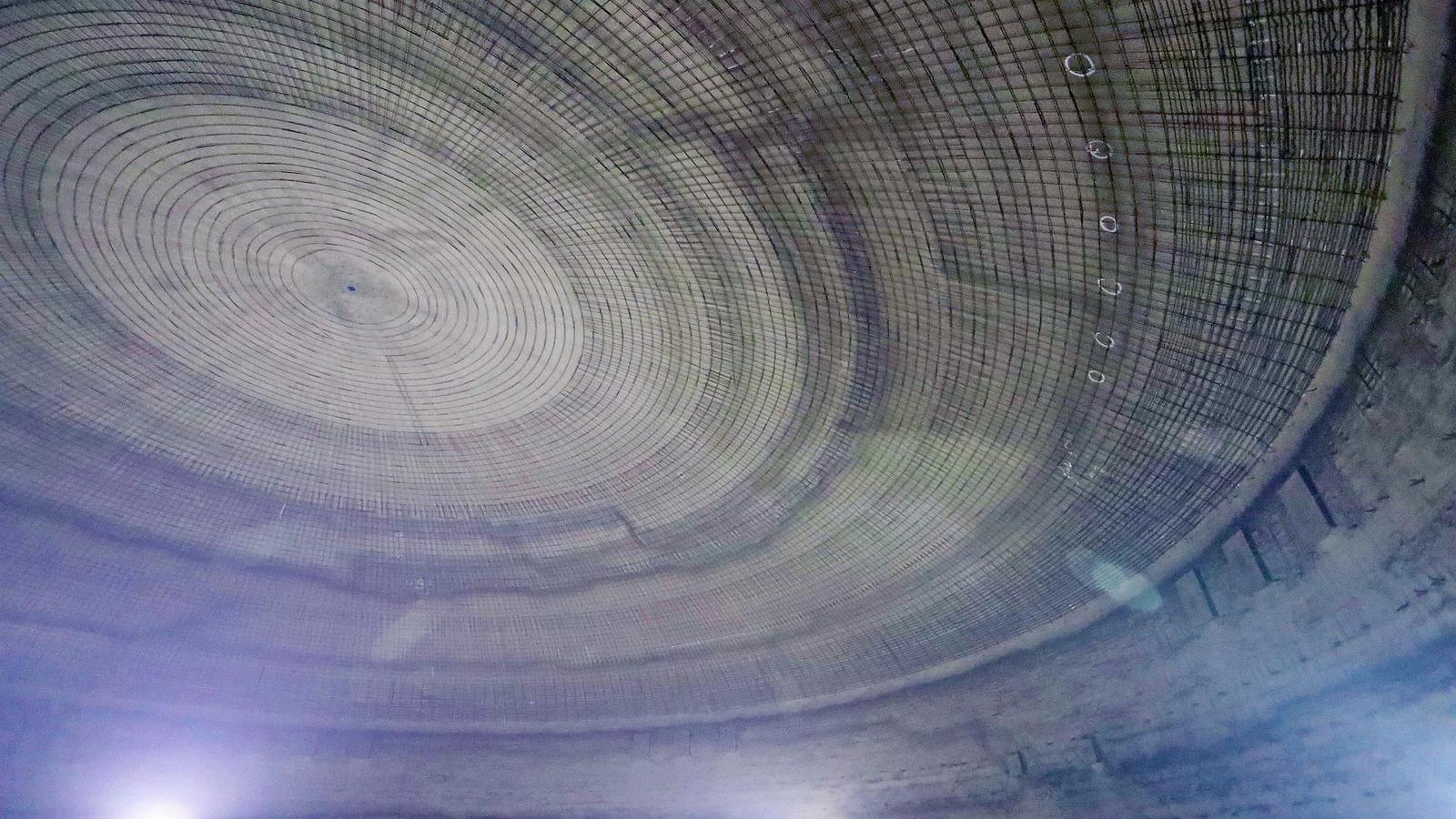
Steel rebar placement continues on the dome portion while the stem-wall is being sprayed with shotcrete.
In just a few days, Mark and his crew had constructed a spider web of steel, artfully woven around where the doors and windows will be. Over the next week, the first layer of rebar was covered with several inches of concrete applied with high pressure. As the concrete hardened, the second layer of rebar was being installed.
I should note that by now we were in the dead of winter with temperatures in the 20s. Work on the outside of the structure was slow due to temperatures and mud, but inside the dome it was warm and work was moving along. The benefits of the soft side formed Monolithic Dome were becoming apparent. The crews were able to work through difficult weather conditions because of the instant shelter provided.
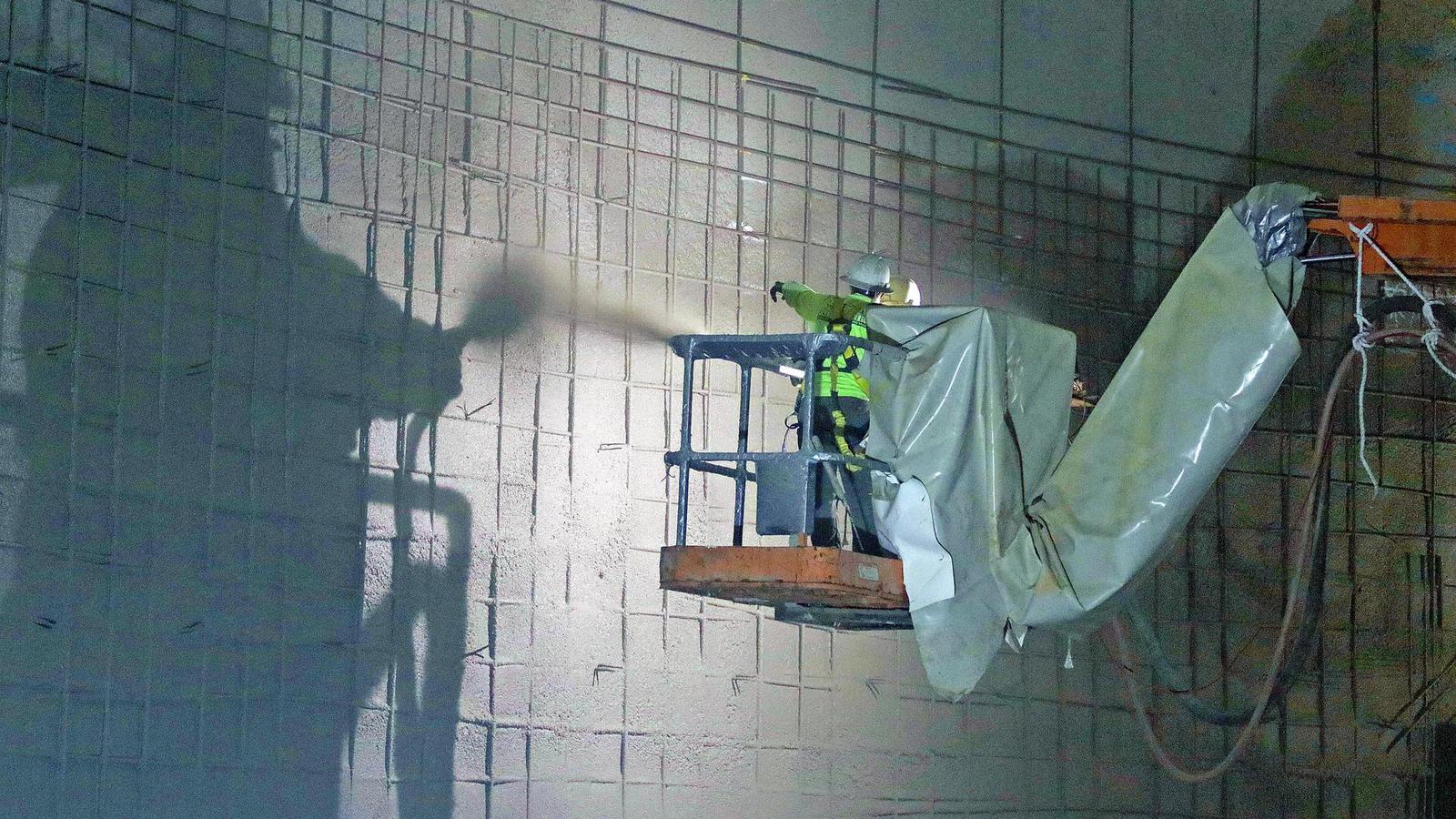
Shotcrete being applied to the stem-wall. The use of an inflatable soft-side form enables seamless construction with reinforced concrete from the footing to the dome apex.
Wrapping it up
As the South Industry’s crew finished up the concrete work and turned the blowers off, they left us with a structure with 8-inch solid concrete walls and 5 inches on the roof. Now that the structure was solid, other contractors were arriving on site.
Outside, steelworkers were building the two stick-out structures using traditional steel and masonry construction methods. This included the lobby, administrative offices, a large meeting room at the front, and the physical training room at the back.
The final steps for South inside the building included removing the forms for the doors and windows, cutting through the outer liner, opening up the 10-foot by 10-foot overhead door, and removing the lifts and forklifts that have lived inside the dome for the past few months.
If it’s a storm shelter, why are there windows?
The biggest question asked was about the windows. This is one of the first public buildings built using the newly developed window and door technology of FEMA rated blast-resistant glass that included the 10-foot by 10-foot overhead door. Soon after South Industries finished, the site was swarming with plumbers, electricians, HVAC, and framers.
As of this article, the building is about 60 days from completion. Plans are being made for the grand opening and the first basketball games to be played in what has been named the Hennessey Eagle Event Center. When done, it will seat about 1800 and have features like a giant 38 foot by 12 foot LED monitor, a state of the art sound system, and be very energy efficient.
